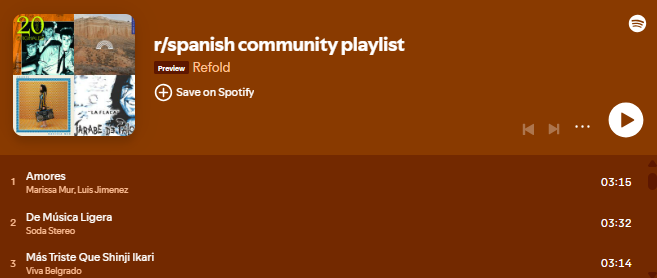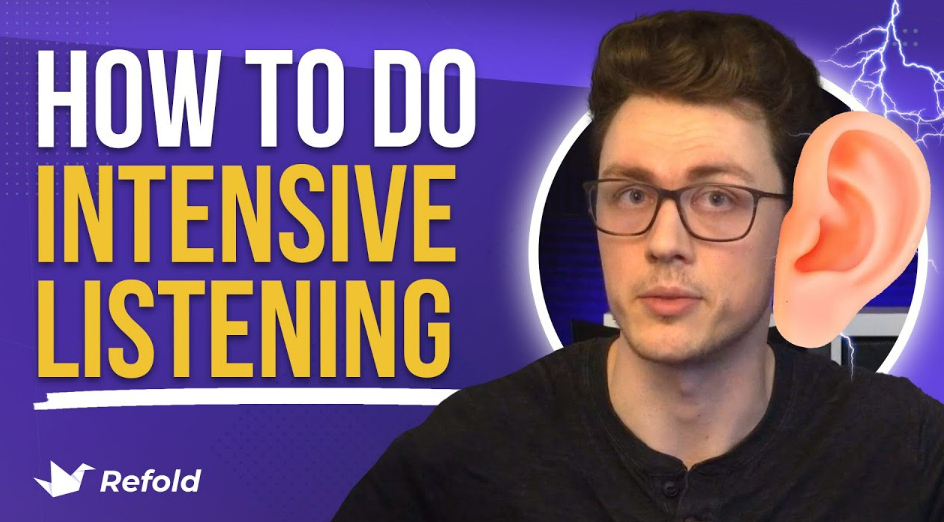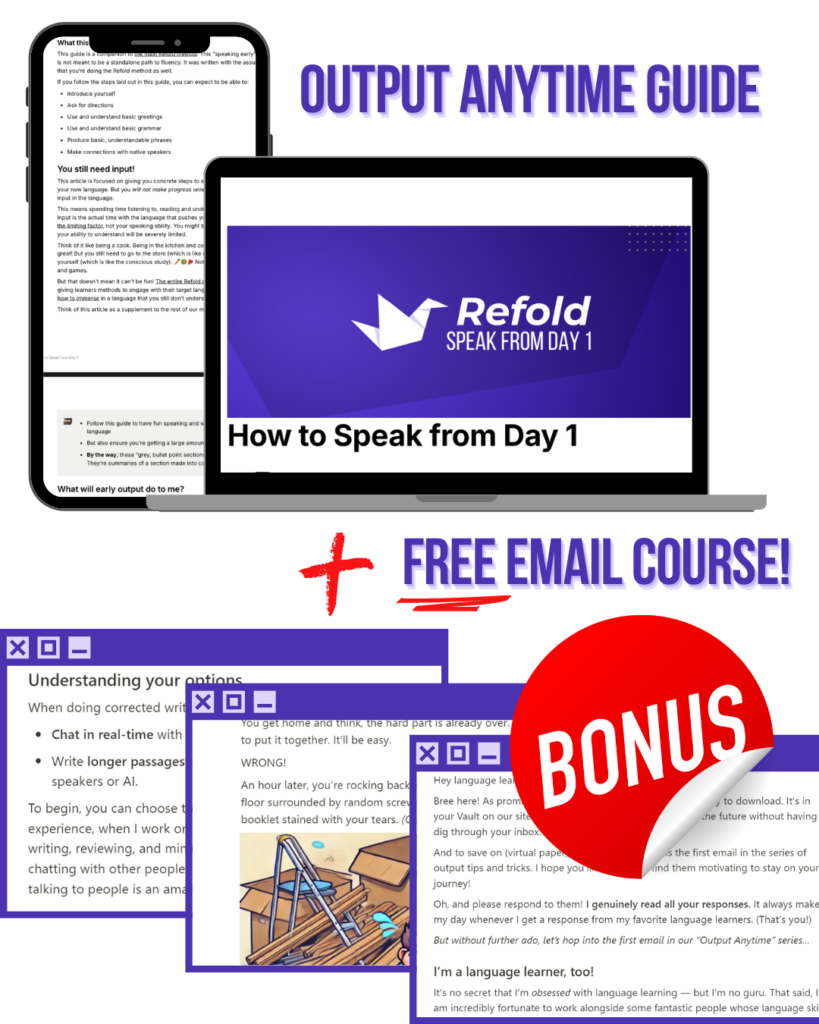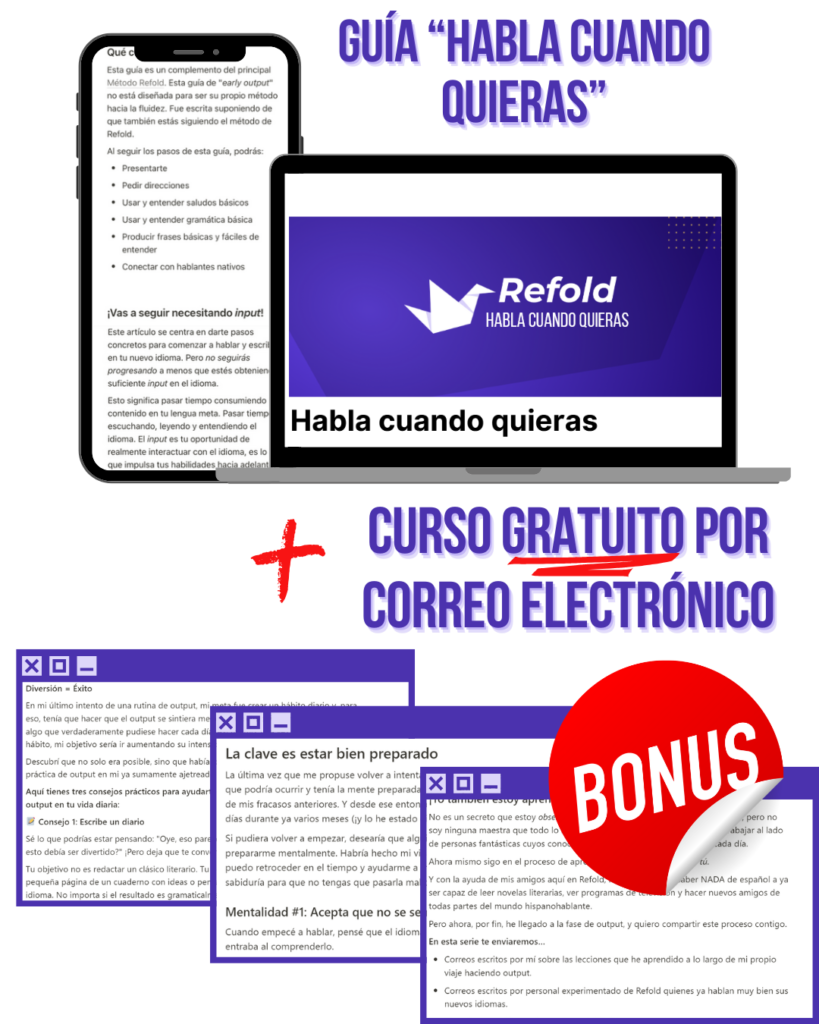We’ve been working very hard on our newest Anki deck and we will “walk you through it!” This deck is for intermediate learners of English, so if you’re not there yet, check out our inglés mil fundamental vocabulary deck instead.
In this post, you will learn the following:
- What phrasal verbs are
- Why they’re important
- How to recognize them
- And how to use your brand new Anki deck

What is a phrasal verb?
Phrasal verbs are very common in English, especially in more informal contexts.
They are made up of a verb and a particle or, sometimes, two particles. The particle often changes the meaning of the verb.
You probably already know they word walk. But, if you add the word through, it totally change the meaning. And that’s the key. With phrasal verbs, the meaning can be TOTALLY different from the original word. Some phrasal verbs even have three parts, like in: get out of. To get out of something means to avoid doing something. But it also has a “literal” meaning of “to remove oneself from.”
- I had to go to dinner with my parents. I couldn’t get out of it.
- Hey, get out of that box, right now!
That’s all a phrasal verb is. One word, but in two (or three) parts
Now, why are phrasal verbs important?
Why are phrasal verbs so often talked about? Why are they important, and why are they difficult?
They’re important because we use them… a lot. There are many times when it’s more natural to use a phrasal verb. This means that you have to get used to them if you want to understand English. It also means that you’ll need to use them if you want to sound natural in English.
And they’re difficult because they’re in two parts, which are required. If you forget one of the parts, it sounds incorrect and, frequently, won’t be understood. For example:
- Can you put that candle?
That sentence makes no sense. It’s missing something. Where do I put the candle? What’s happening? But if I add the other part of the phrasal verb:
- Can you put out that candle?
Now it suddenly does! But the other annoying part of phrasal verbs is that, sometimes, they can be split up in the sentence.
- Can you put that candle out?
is also a totally natural and common way to say that sentence. And this is what causes problems for you lovely amazing English learners. It takes a while to get used to one word actually being in several parts of the sentence.
But, you almost certainly have similar things in your native language. But you’re so used to it that you never think about it. You’ve heard those things a million times, and so they’re just… normal. That’s what you need to do with phrasal verbs in English.
So that’s what this practice deck is going to help you do!
And there’s one more thing that makes phrasal verbs hard to learn… they usually have several different meanings. Although, that’s pretty common with languages in general.
If you’re immersing in real English content, you’ll learn the meanings pretty quickly. That’s also what this deck will help you do: become familiar with the different meanings of common phrasal verbs.
How to recognize phrasal verbs
The key to learning phrasal verbs naturally and effectively is to notice them and understand them. The more you notice them, the easier they become and the faster you understand.
Eventually, you’ll stop noticing them at all and just understand. THAT’s when you know you’re building an instinct for phrasal verbs.
This means that you don’t need to drill them or practice them a thousand times. Just get used to seeing them and your brain will figure out the rest. I promise. Whenever you come across a very that you feel like you know, but that doesn’t really make sense in the sentence, look around for a “partner” word. That partner word is usually going to be one of these:
- out
- up
- down
- on
- back
- off
- in
- through
- over
- around
- to
- with
- along
- for
- about
- ahead
You don’t need to memorize this list or anything, you’ll get used to it.
The partner word can be in a few different places: right after the main verb, one “jump” away, or
at the end of the idea. If you do find a partner word, then you know you’ve found a “phrasal
verb.” If you still don’t understand the meaning or it’s not coming to you right away, look it up! If I
just google “put out definition,” I get some great definitions. You can also search these in most
dictionaries or ask an AI.
Quick note: Not all 2 piece verbs are “phrasal.” Sometimes, they’re just literal. Go up, go down,
go around and go through all have literal definitions. They’re just describing how something is
“interacting with the world.” Phrasal verbs are the ones with weird or crazy definitions.
Let’s look at some examples of phrasal verbs in sentences. These are actually some sentences
from the deck! I want you to see if you can find the phrasal verb. I don’t care if you know what it means, just if you can find it.
- You go ahead and start, and I’ll be there in a few minutes.
- You should check out the new cafe in town.
- Shut your computer down before you go home.
- I accidentally put my pants on backwards this morning.
Very good! If you didn’t understand any of those sentences, don’t worry about it! You’ll learn all
the meanings of the phrasal verbs with the deck.
Speaking of the deck…
How to use the Refold Phrasal Verbs Anki deck
First, if you don’t have Anki installed, you’ll need to set that up first. Here is a link to a tutorial from Ben on how to set up Anki.
The deck itself actually has two parts:
- The “priming” section
- The practice section
In the first section, you’ll see each of the phrasal verbs one at a time. The front of the card will have just the verb (and my voice). Your job is to think of what it means.
Just 1 or 2 definitions is fine. This card isn’t meant to be hard. It’s just meant to remind you of the meanings. On the back, check to make sure you remembered at least 1 of the meanings. If you did, pass the card (Good). If you didn’t remember any, or you want to review it again, fail the card (Again). To be clear, these are supposed to be reminder cards. If you don’t remember everything, that’s totally fine!
Because, after you go through all 150 priming cards, you’ll find the practice cards! These start with a sentence (and my voice). You need to, first, identify the phrasal verb and then try to remember what the sentence means. If you were able to find the phrasal verb and generally remembered the meaning, that’s good enough. Pass the card. If you couldn’t find the phrasal verb, or you were totally surprised by the definition, fail it.
Like what you see?
Sign up now and we'll deliver even MORE amazing content like this right to your inbox!
- Receive our exclusive 6 SECRETS to language learning success email course.
- Stay motivated with weekly emails overflowing with helpful language-learning tips, tutorials, and more!
- Get behind the scenes access into the inner workings of Refold!
Get our 6 SECRETS to language learning success
This deck only covers 150 phrasal verbs and ~330 different meanings. That’s a lot, but not even close to ALL the phrasal verbs in English. You cannot learn all these from Anki. You have to learn them by experiencing real, natural English. This deck is meant to teach you how to identify phrasal verbs and make them less “scary.”
So, go out there are start to notice these phrasal verbs and conquer them, once and for all! If you have any issues with the deck, send an email to support@refold.la. And if there’s an issue with one of the cards, you can press the little ! icon to send us feedback.













